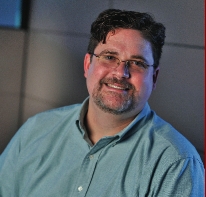HOME / PROCLAMATION! MAGAZINE / 2012 / WINTER / ADVENTISM EXAMINED WITH RICK BARKER
W I N T E R • 2 0 1 2
VOLUME 13, ISSUE 4
 D E P A R T M E N T S
D E P A R T M E N T S
Adventism EXAMINED with Rick Barker
![]()
![]()
Fundamental Belief #4. Son:
God the eternal Son became incarnate in Jesus Christ. Through Him all things were created, the character of God is revealed, the salvation of humanity is accomplished, and the world is judged. Forever truly God, He became also truly man, Jesus the Christ. He was conceived of the Holy Spirit and born of the virgin Mary. He lived and experienced temptation as a human being, but perfectly exemplified the righteousness and love of God. By His miracles He manifested God’s power and was attested as God’s promised Messiah. He suffered and died voluntarily on the cross for our sins and in our place, was raised from the dead, and ascended to minister in the heavenly sanctuary in our behalf. He will come again in glory for the final deliverance of His people and the restoration of all things.
Careful reading is required to spot the deception, but the language of this fundamental belief reveals some of the Adventist heresies regarding Christ. Perhaps the most visible problem with this fundamental belief is that it omits the biblically accurate and routine Christian description of Christ being seated at the right hand of the Father. Adventists avoid discussing this position because it raises questions about their sanctuary/investigative judgment doctrine. In Adventist theology, Christ did not enter the Most Holy Place, where the throne of God is located according to Old Testament typology, until more than 1800 years after His ascension to heaven. Christ could not have been both seated at the right hand of the Father and also waiting to enter the Most Holy Place until October 22, 1844.
The next window into Adventist beliefs is the tense used in describing salvation. According to Scripture, Jesus Christ accomplished (past tense) the salvation of humanity. Within Adventism, however, salvation isn’t fully accomplished yet, so they can’t use past tense. Therefore they say, “Through Him all things were created [past tense]…[and] the salvation of humanity is accomplished [present tense].” This wording allows for their investigative judgment theology which has Jesus still completing the work of atonement.
Moreover, this belief statement does not even allude to many of the greatest Seventh-day Adventist heresies regarding Christ. Many Adventists deny that Jesus and the Father are One in substance. Furthermore, Adventism actively teaches that Christ could have failed. The Adventist Church, moreover, cannot decide whether Jesus has a sinful nature or the nature of Adam before sin, so both teachings are present within the organization. In Adventism, the primary reason for Christ’s incarnation was to prove that God’s law can be kept by a human, and His main role is to be an example, not a substitute. Moreover, Adventism teaches that Jesus is the archangel Michael, and this teaching is a critical component of their other doctrines and of their eschatology. Finally, Adventism teaches that Satan, not Jesus, is the scapegoat who bears the sins of the saved into the lake of fire and is thus their final sin-bearer.
The Seventh-day Adventist teaching about Jesus is quite different from that of historic Christianity. The denomination was founded by leaders who held Arian views, and these distortions of Christ’s nature still taint the writings, hymns, and doctrines of the organization to this day. Christ’s role as our substitute is minimized and at times is completely absent, and most of Adventism’s heretical beliefs about Jesus are not articulated in their public statement of belief. †

Copyright 2012 Life Assurance Ministries, Inc., Casa Grande, Arizona, USA. All rights reserved. Revised December 17, 2012. Contact email: proclamation@gmail.com

Rick Barker is a native of Southwestern Ohio and facilitates a weekly Bible study for former and transitioning Adventists in the Dayton, Ohio, area. Rick graduated from Andrews University in 1987 and received a Masters degree from the University of Dayton. Rick and his wife Sheryl formally left the Adventist chuch in 2004. Prior to this they had been active in the Miamisburg and Wilmington, Ohio, churches.

